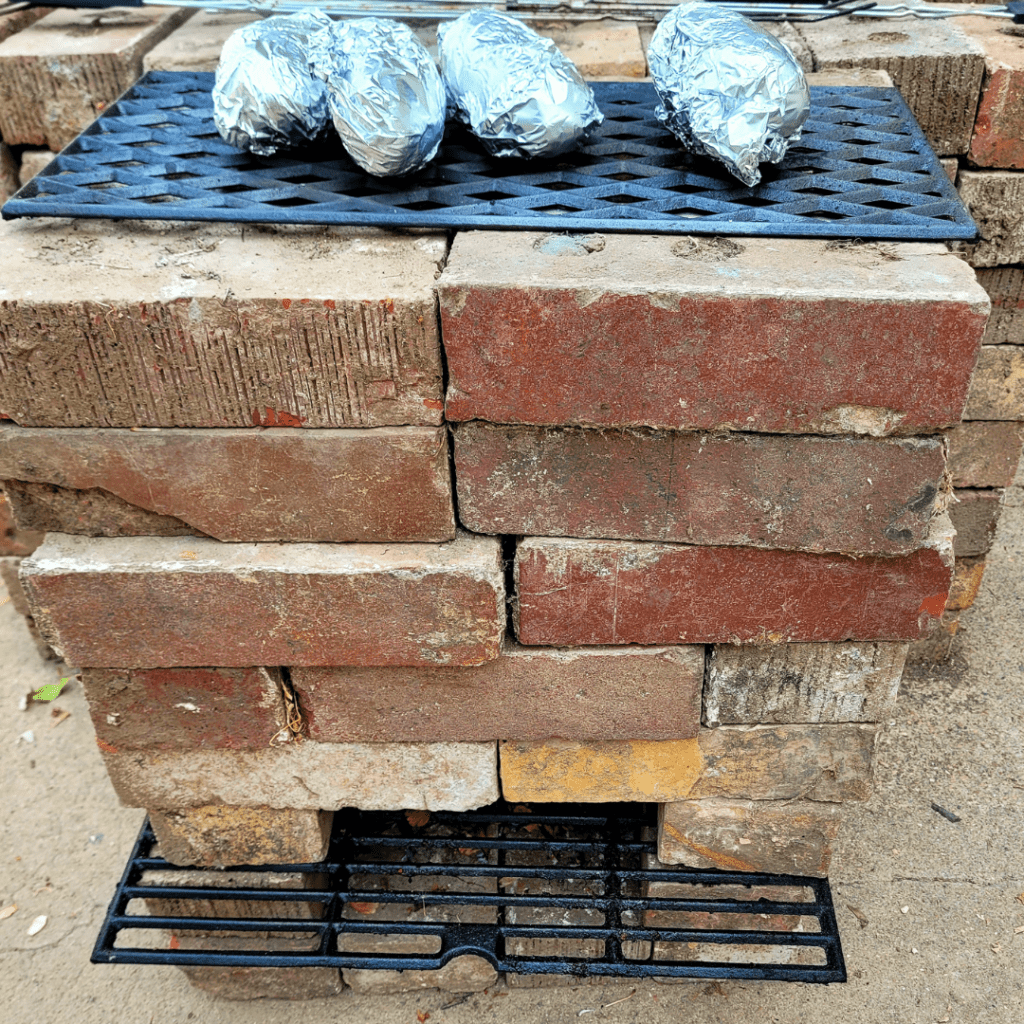Choosing the Best Survival Cooking Kit: The Ultimate Guide Discover how to pick the perfect survival cooking kit for any emergency. From portable stoves to durable cookware, this guide helps you prepare meals safely and efficiently, ensuring you’re ready for outdoor adventures or unexpected situations.
Whether you’re an avid adventurer or a cautious prepper, the right survival cooking kit can make all the difference. It’s not just about sustaining yourself in the wild or during emergencies; it’s about maintaining a semblance of normalcy and comfort through food. But with the plethora of options available, choosing the perfect kit can feel overwhelming.
In this guide, I’ll walk you through the key factors to consider, ensuring your survival cooking kit meets your needs without weighing you down. Let’s get started and make sure you’re equipped to cook up sustenance wherever your adventures may lead or if you find yourself in an emergency grid-down situation.
This is a pinnable post. Tap or hover over any image in this post to pin to your Pinterest Boards.
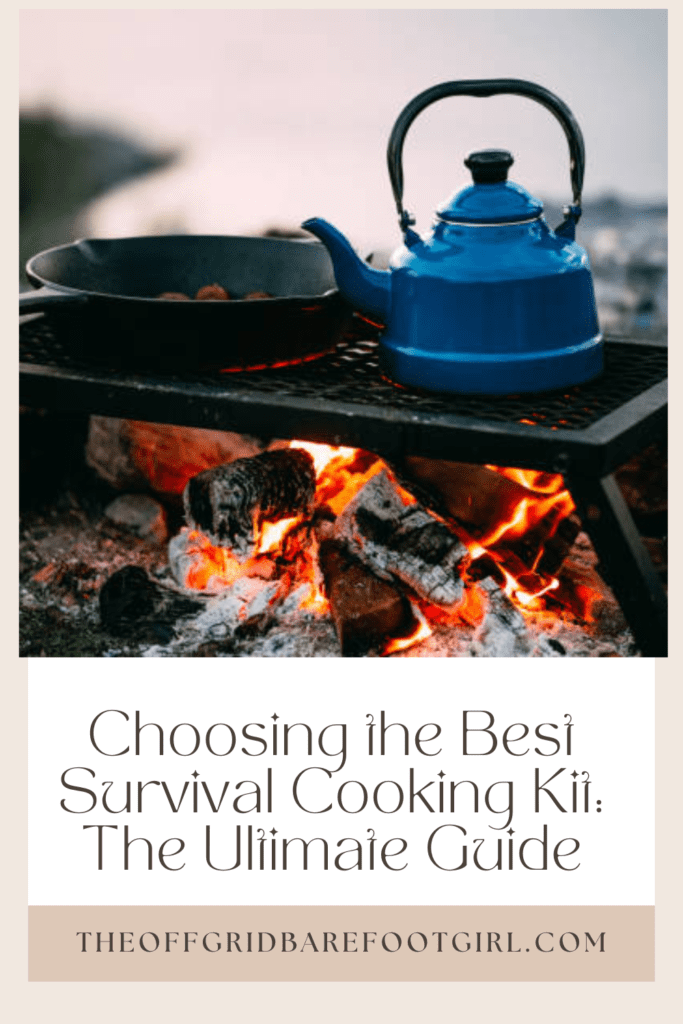
Importance of a Survival Cooking Kit
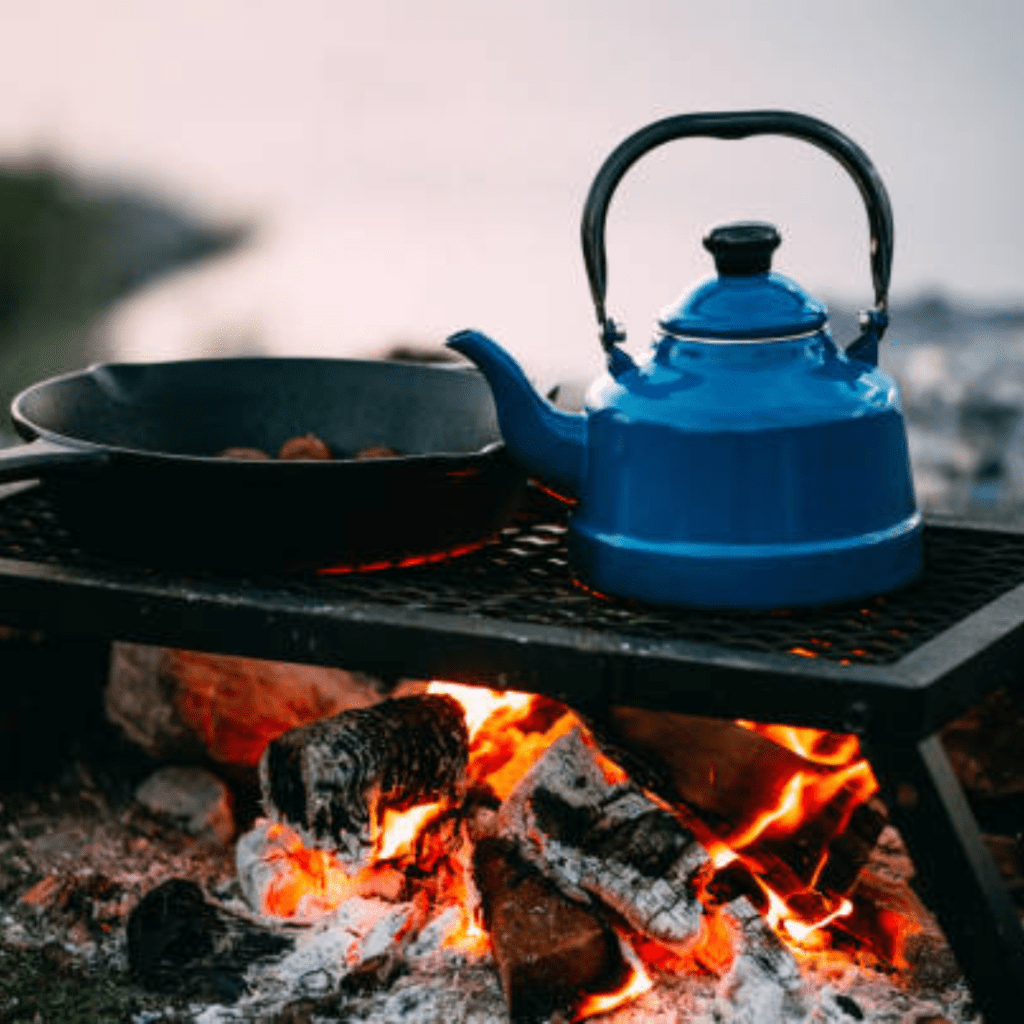
Imagine you’re stranded in the wild or facing a long-term power outage from a storm or natural disaster. Not the best picture, right? This is where a survival cooking kit becomes a game-changer!
It’s not just about the luxury of a hot meal; it’s about survival. Being able to cook can mean the difference between staying healthy and falling ill due to uncooked or poorly prepared food. Plus, a hot meal or drink can be a massive morale booster in tough situations!
In essence, a survival cooking kit is your lifeline to maintaining nutritional intake and purifying water, which are fundamental for survival. It embodies the principle of being prepared for the unexpected, ensuring you can feed yourself and your loved ones when traditional cooking methods aren’t available.
Considerations When Choosing a Survival Cooking Kit
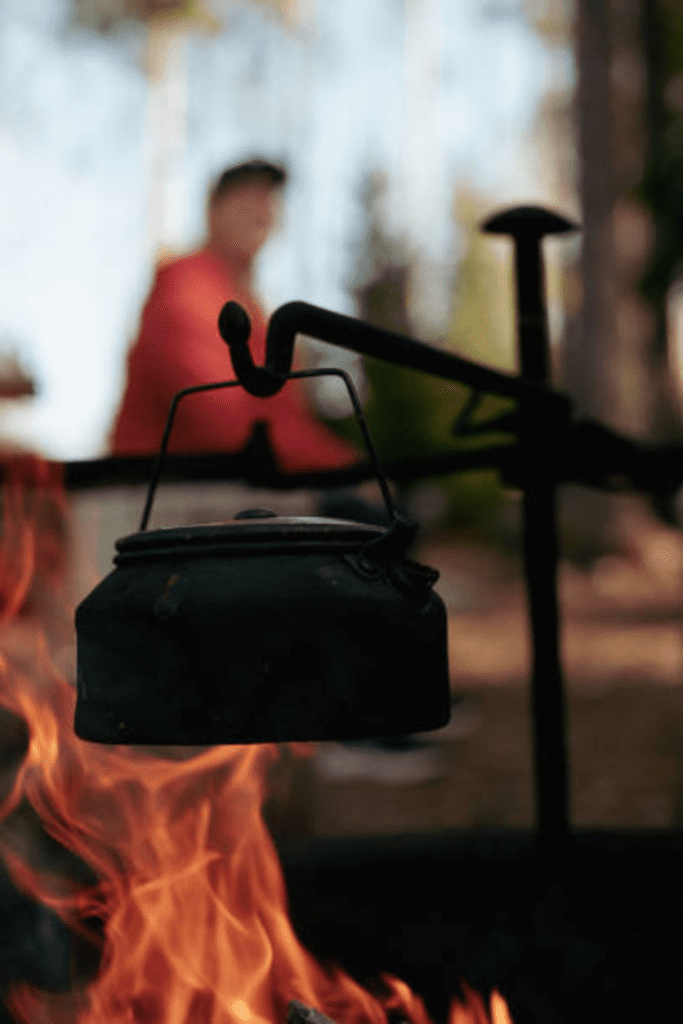
When you’re in the market for a survival cooking kit, there are several boxes you’ll want to tick to ensure you’ve got the right gear for your emergency needs or outdoor adventures. It’s not just about having a pot and a pan; it’s about ensuring your cookware can withstand extreme conditions and meet your specific needs.
- Size and Composition: First off, think about how many people you’re planning to feed. Kits vary in size, and it’s essential to match the kit with the number of mouths to feed. Also, consider the type of meals you’ll be preparing. Are you going for freeze-dried meals that require just boiling water, or are you planning more elaborate meals?
- Essentials Included: Does the kit cover the basics? Look for kits that include pots, pans, bowls, utensils, and possibly a stove. The more complete it is, the less you’ll have to add, saving you time and possibly money.
- Adaptability: Consider how versatile the kit is. Can it be used over an open fire as well as with the included stove? The ability to adapt to different cooking scenarios can be a game-changer in the wild or grid-down situations.
Choosing the right survival cooking kit doesn’t have to be daunting. By considering these aspects, you’ll be well on your way to making a choice that’s as smart as it is functional.
Durability and Material
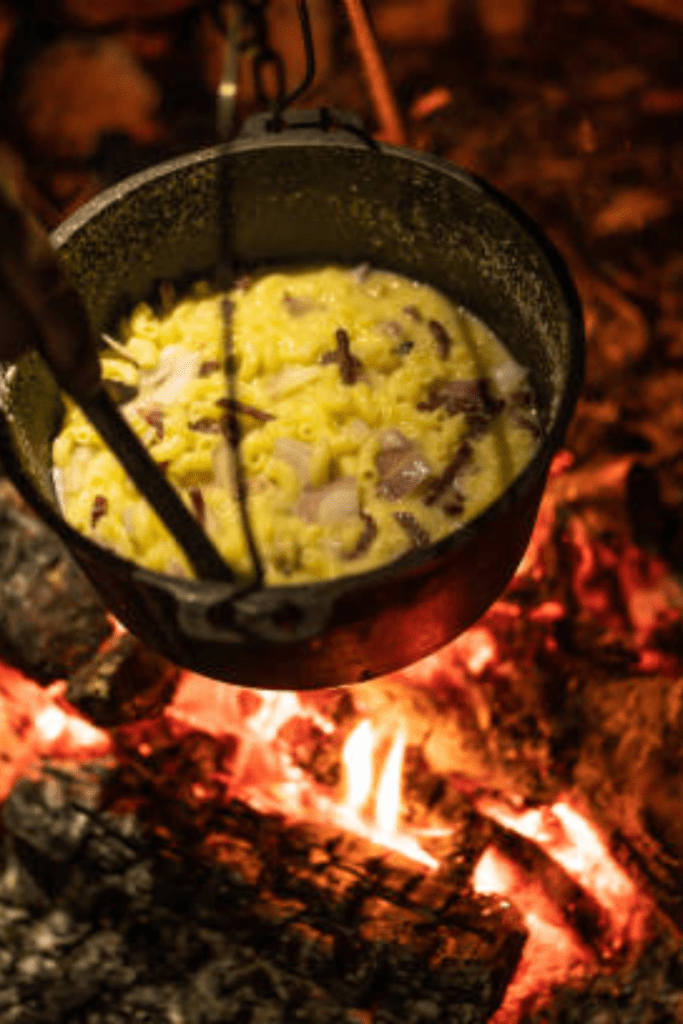
When it’s you against the elements, the durability of your survival cooking kit can be a real game-changer. Think of it as the difference between eating a warm meal and munching on raw provisions.
The construction material speaks volumes about longevity and resilience.
- Cast Iron? Great, but extremely heavy for outdoor adventures! But great for outdoor kitchens!
- Stainless Steel? Virtually indestructible, but a tad heavy.
- Aluminum? Lighter, heats up quicker, but not as tough.
- Titanium? Now that’s the sweet spot for many adventurers – lightweight and strong, though it does come with a higher price tag.
Remember, your cooking kit is your culinary comrade in the wild. Choose wisely, and it’ll be one less thing to worry about when nature tests your limits.
Portability and Weight
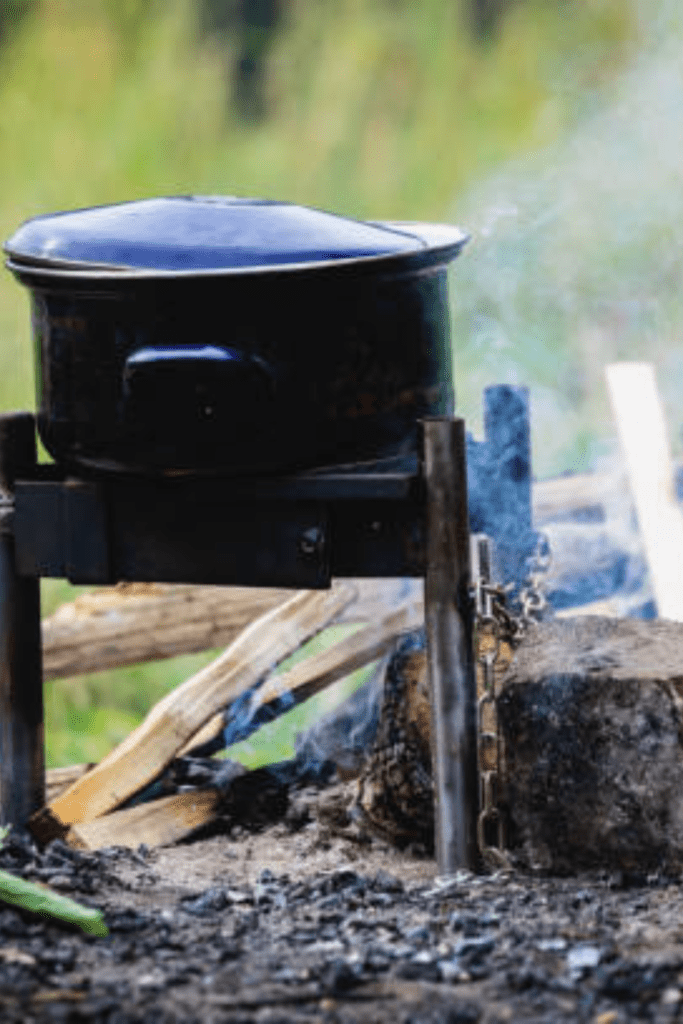
When you’re miles from civilization, the last thing you want is a cooking kit that feels like a ton of bricks in your backpack. The ideal survival cooking kit combines functionality with feather-light portability. Think about it – besides your cooking gear, you’ll have other essentials like water, food, and shelter supplies.
Aim for a kit that strikes the right balance between weight and durability. Aluminum and titanium are great materials that keep things light without sacrificing strength. Compact designs that nest or fold can save precious space, too.
Here’s a Pro Tip: Practice packing your kit before your adventure! It’ll give you a real sense of its weight and how it fits with your other gear. Remember, in the wild, every ounce counts. Don’t let a heavy cooking kit weigh down your ability to roam freely and explore or search for safety.
Cooking Methods and Fuel Options
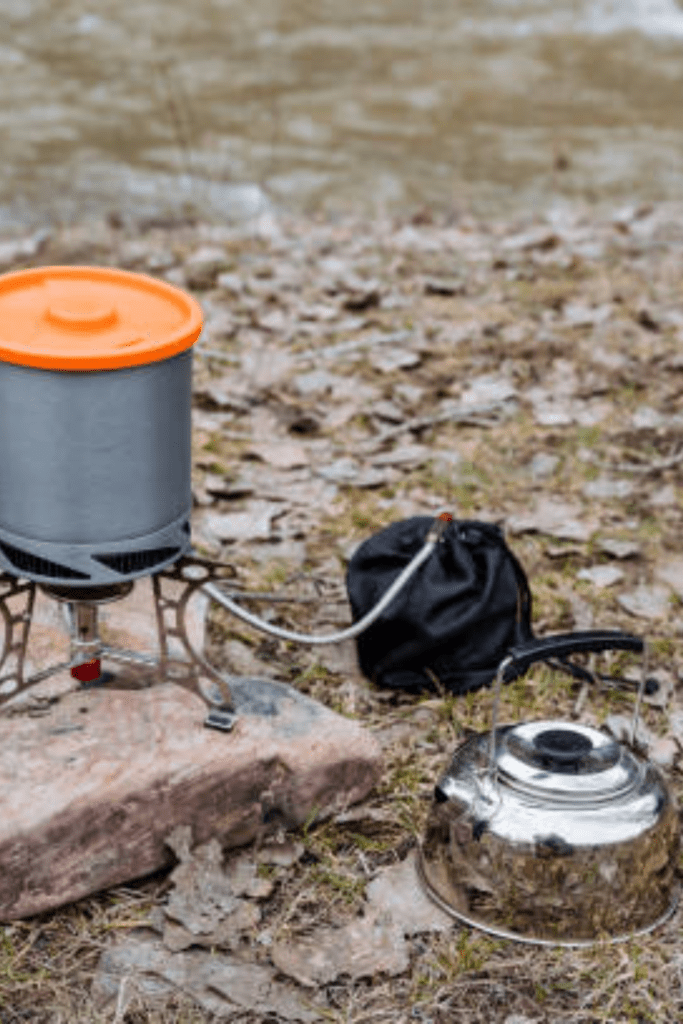
When it comes to surviving in the great outdoors, knowing your cooking methods and fuel options could mean the difference between a warm meal and a cold night. Think of it as choosing your culinary adventure – only, this time, it’s with a survival twist!
- Propane and Butane Stoves are akin to bringing a portable kitchen with you. They’re quick, efficient, and great for most weather conditions. However, the need to carry canisters might add extra weight to your pack.
- Solid Fuel Tablets offer an interesting alternative. These little blocks can be a game-changer due to their lightweight and ease of use. They’re perfect for boiling water or heating up small meals, making them a minimalist’s dream.
- Wood Burning Stoves take you back to primal cooking methods. They rely on twigs and branches you find along your journey, so there’s no need to carry fuel. This method connects you to nature, but requires practice to master the art of fire-starting without modern conveniences.
Choosing the right fuel and method will depend on the weight you’re willing to carry, the conditions you expect to face, and how much you’re willing to engage with the raw elements. It’s about balancing convenience with adventure and survival.
Reviews and Recommendations
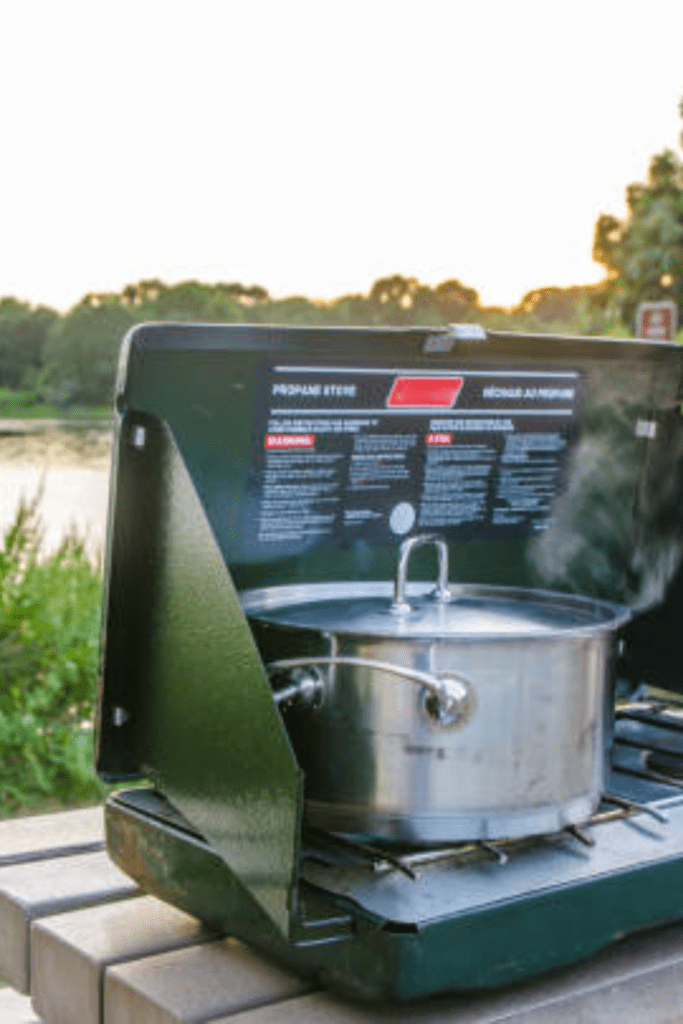
Navigating the sea of survival cooking kits can feel overwhelming, but leaning on the wisdom of the crowd can steer you in the right direction. Dive into user reviews before making a purchase; they’re like breadcrumbs left by fellow adventurers guiding you through the forest of options.
Look for consistent praise or criticism about aspects like durability, ease of use, and how the kit performs under adverse conditions. Brands that consistently pop up with positive feedback are worth giving extra attention.
Remember, the best survival cooking kit for someone else might not be the perfect fit for you, but understanding why people love (or don’t love) their kits can provide valuable insight into what might work well for your own adventures or emergency needs.
Testing and Practice
Before heading out into the wild, test your survival cooking kit at home. Familiarize yourself with set-up, use, and clean-up processes. It’s crucial to be comfortable with your equipment; you don’t want to try to figure it out when you’re hungry and exhausted.
Does your stove light easily? Can you assemble it quickly? Practice makes perfect. Plus, testing allows you to identify any missing essentials. Remember, in survival situations, your gear isn’t just equipment—it’s your lifeline!
Conclusion
Choosing the right survival cooking kit boils down to understanding your needs and finding a balance between durability, portability, and versatility. Before venturing out, take time to research, read reviews, and practice using your kit. Preparedness is key to navigating any adventure with confidence.
Ensure you’re fully prepared to cook and sustain yourself during emergencies by checking out The Complete Guide to Emergency Preparedness: Everything You Need to Thrive in Any Situation.
Resources: Here are some helpful resources for further information.
- Campfire Survival Cooking Kit – By Self Reliance Outfitters
- Cooking Gear & Survival Tools for Emergencies – By My Patriot Supply
- Cooking Kits – By Survival Frog
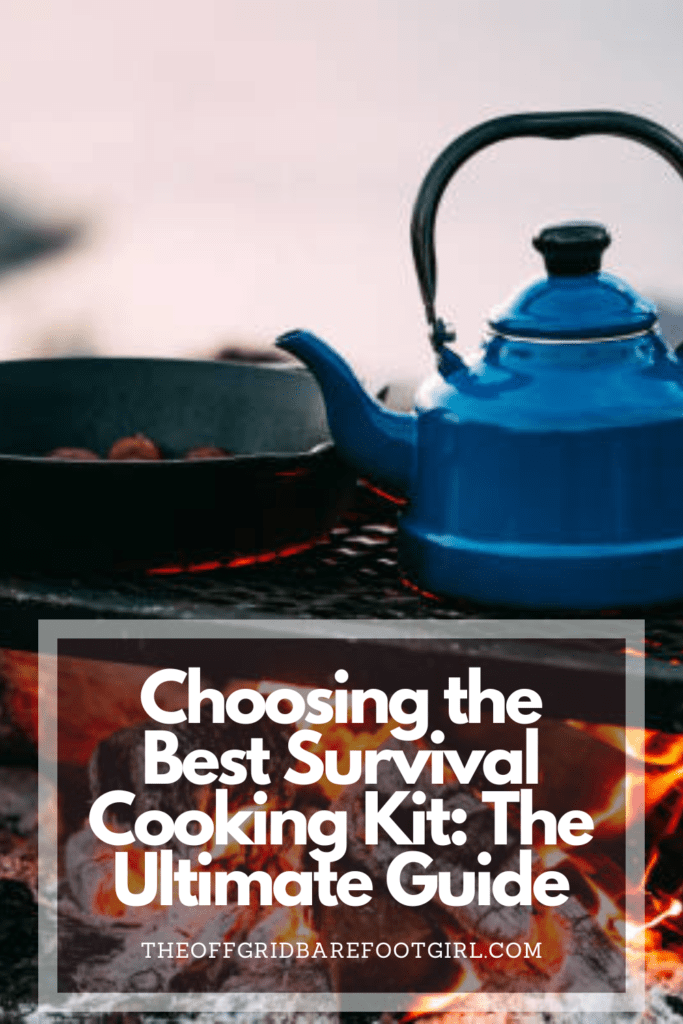
Frequently Asked Questions
1. What is a survival cooking kit and why do I need one?
A survival cooking kit is a compact and portable set of tools and equipment designed for preparing meals in emergency situations or outdoor adventures. It typically includes items such as a camp stove, fuel, a pot or pan, utensils, and basic seasonings. Having a survival cooking kit is essential for anyone who enjoys camping, hiking, or other outdoor activities where access to traditional kitchen appliances may be limited. In emergencies, such as power outages or natural disasters, a survival cooking kit can provide hot meals and help maintain morale and energy levels. By having the necessary tools on hand, you can easily prepare food without relying on electricity or modern conveniences. A well-stocked survival cooking kit ensures you are prepared for any situation that may arise while exploring the great outdoors or during unexpected emergencies.
2. What factors should I consider when choosing a survival cooking kit?
When choosing a survival cooking kit, there are several important factors to consider. Firstly, consider the size and weight of the kit. You want something lightweight and compact that won’t weigh you down in an emergency situation. Secondly, think about the durability of the materials. You want a kit made from high-quality materials that can withstand rough handling in harsh conditions. Additionally, look for a kit that is multifunctional, with tools like a pot, pan, utensils, and a stove all included. Lastly, consider the ease of use – you don’t want to be struggling with complicated gadgets when you’re already dealing with a stressful survival situation. Overall, make sure to prioritize portability, durability, functionality, and ease of use when selecting your survival cooking kit.
3. Are there specific features or tools that are essential in a survival cooking kit?
When it comes to survival cooking kits, there are definitely some specific features and tools that are essential. One of the most important items you’ll need is a compact stove or portable grill, as this will allow you to cook food quickly and efficiently in a variety of outdoor conditions. Another key tool to have in your survival cooking kit is a set of lightweight cookware, such as a small pot or pan, which can be used to heat up water or prepare meals over an open flame. Additionally, having a reliable fire starter, like waterproof matches or a magnesium fire starter, is crucial for getting your cooking fire going in any situation. And don’t forget about utensils – make sure to pack a durable knife and some basic eating utensils so you can easily prepare and enjoy your meals while out in the wilderness. By including these essential features and tools in your survival cooking kit, you’ll be well-equipped to handle any culinary challenges that come your way on your outdoor adventures.
4. Are there any important safety tips to keep in mind when using a survival cooking kit?
When using a survival cooking kit, there are a few important safety tips to keep in mind. First and foremost, always make sure to set up your cooking area on stable ground away from any flammable materials such as dry leaves or branches. Additionally, be mindful of the wind direction so that you don’t accidentally ignite a fire or get burned while cooking. It’s also crucial to never leave your cooking kit unattended while it is in use to prevent accidents. Finally, always keep a close watch on the temperature of your stove or fire to avoid overheating and potential burns. By following these safety tips, you can enjoy using your survival cooking kit without putting yourself or others at risk of harm.
Summary
I hope I have inspired you to help you prepare for emergencies with a survival cooking kit with these helpful tips and products. Here are some other links you may be interested in reading!
Survive the Peaks: The Best Avalanche Gear on the Market!
Bug In and Survive a Grid Down: Survival Training Course!
Bugout Bags and Survival Training Course with Grid Down Consulting!
Get These Vital Emergency Survival Equipment Now!
Bartering: How To Negotiate Commodities with Astonishing Results!
Warning: Why You Need Whole Home Water Purification Now!
How to Design Off Grid Power Systems for Your Homestead
How Many Watts Does a Fridge Use? Energy Efficient Guide
The Best States for Off Grid Living: Unplugged and Thriving
Composting Toilet Systems Are Surging: Ditch Your Septic Tank Now!
Are Greywater Tanks the Key to Sustainable Living? Find Out Now!
How to Live Off-Grid: 11 Tips to Survive and Thrive!
Are Survival Food Kits Worth It? The Truth Revealed!
Do You Really Need Faraday Bags? The Shocking Truth Revealed!
The Best Doomsday Preppers Blogs to Follow Now Before SHTF!
The Ultimate Camping Gear Checklist: Everything You Need for an Adventure
The Ultimate Spring Cleaning House Checklist: Deep Clean with Me!
How Supporting Farmer’s Markets Makes a Difference
Eco-Friendly Christmas: How to Have an Eco-Friendly Christmas
How to Winterize Your Home: Prepare for Jack Frost’s Wrath!
Proven Hacks to Make Your Christmas Tree Survive
What Thanksgiving Teaches Us About Survival
Homeless Survival Hacks to Overcome Adversity
More Self-Sufficiency Posts!
Is Your Car Ready for Winter? The Ultimate Checklist for Your Winter Emergency Car Kit
What The Walking Dead Can Teach Us About Survival: The Walking Dead Survival Tactics
Get Lockdown Ready: Best Dollar Tree Survival Items
Understanding Water Purification Methods for Survival: Best Practices Explained
Thirsty for Survival: Expert Guide to Emergency Water Prep Tactics
The Benefits of Urban Homesteading: Revolutionize Your City Life
Practical Pantry Prepper: Essential Guide
How to Grocery Shop Once a Month
What Should Be in A 72-Hour Survival Kit?
Buy or Die: Prepper Items You Need Now
How to Learn 58 Self-Sufficient Skills Right Now
Road to Self-Sufficiency: How to Start Your Journey
If you were encouraged by this post, I invite you to check out my FREE Printables Page for fun free printables, planners, and charts.
ENTER MY FREE Printables Page HERE
Blessings,
The Off Grid Barefoot Girl





